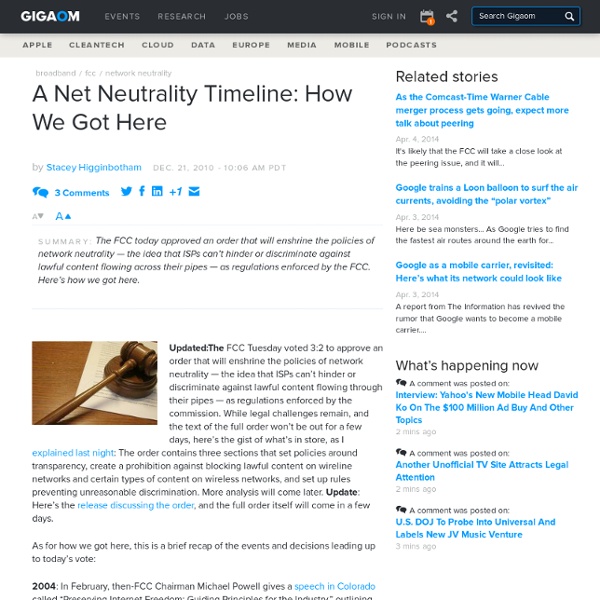A Net Neutrality Timeline: How We Got Here

Cyber Bullying Statistics
Cyber bullying statistics refers to Internet bullying. Cyber bullying is a form of teen violence that can do lasting harm to young people. Bullying statistics show that cyber bullying is a serious problem among teens. By being more aware of cyber bullying, teens and adults can help to fight it. Cyber bullying affects many adolescents and teens on a daily basis. Cyber bullying involves using technology, like cell phones and the Internet, to bully or harass another person. Sending mean messages or threats to a person’s email account or cell phoneSpreading rumors online or through textsPosting hurtful or threatening messages on social networking sites or web pagesStealing a person’s account information to break into their account and send damaging messagesPretending to be someone else online to hurt another personTaking unflattering pictures of a person and spreading them through cell phones or the InternetSexting, or circulating sexually suggestive pictures or messages about a person
What is Bullying?
Aggressive behavior may be bullying depending on what happened, how often it happens and who it happens to. Find out what bullying is and what the different types are. You can also learn more about other topics related to bullying. Bullying Definition Bullying is unwanted, aggressive behavior among school aged children that involves a real or perceived power imbalance. The Roles Kids Play There are many roles that kids can play. Related Topics There are many other types of aggressive behavior that don’t fit the definition of bullying.
Bullying Frequently Asked Questions - School Environment
Frequently asked questions based on the Bullying at School publication. These Frequently Asked Questions about bullying are extracted from key concepts presented in the California Department of Education's publication titled Bullying at School (PDF). They are easy to adapt and provide information for educators, students, families, and community safety partners who wish to educate themselves and others about effective measures to prevent bullying and respond to it. What is school bullying? What are the consequences of school bullying? What is school bullying? Bullying is exposing a person to abusive actions repeatedly over time.1 Being aware of children's teasing and acknowledging injured feelings are always important. Bullying is a form of violence. What do bullies do? Bullying actions may be direct or indirect. Direct bullying or identifiable bullying actions may include: Indirect bullying may be more difficult to detect and may include: Do both boys and girls bully? Yes. return to top
Related:
Related:



